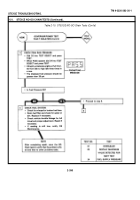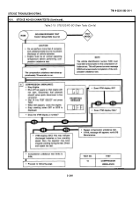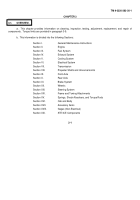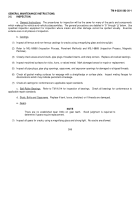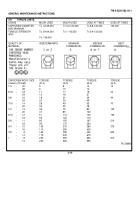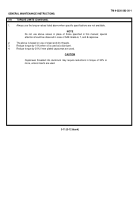TM-9-2320-283-20-1 - Page 523 of 926
TM 9-2320-283-20-1
GENERAL MAINTENANCE INSTRUCTIONS.
3-5.
INSPECTION.
a.
General Instructions.
The procedures for inspection will be the same for many of the parts and components
which makeup the vehicle and vehicle subassemblies.
The general procedures are detailed in "b" through "g" below.
Use
specified inspection equipment for inspection where cracks and other damage cannot be spotted visually.
Exercise
extreme care in all phases of inspection.
b.
Castings.
(1) Inspect all ferrous and non-ferrous castings for cracks using a magnifying glass and strong light.
(2) Refer to MIL-I-6866 (Inspection Process, Penetrant Methods) and MIL-I-6868 (Inspection Process, Magnetic
Particles).
(3) Closely check areas around studs, pipe plugs, threaded inserts, and sharp corners.
Replace all cracked castings.
(4) Inspect machined surfaces for nicks, hurrs, or raised metal.
Mark damaged areas for repair or replacement.
(5) Inspect all pipe plugs, pipe plug openings, capscrews, and capscrew openings for damaged or stripped threads.
(6) Check all gasket mating surfaces for warpage with a straightedge or surface plate.
Inspect mating flanges for
discolorations which may indicate persistent oil leakage.
(7) Check all castings for conformance to applicable repair standards.
c.
Ball-Roller Bearings.
Refer to TM 9-214 for inspection of bearings.
Check all bearings for conformance to
applicable repair standards.
d.
Studs, Bolts and Capscrews.
Replace if bent, loose, stretched, or if threads are damaged.
e.
Gears.
NOTE
There are no established wear limits on gear teeth.
Good judgment is required to
determine if gears require replacement.
(1) Inspect all gears for cracks, using a magnifying glass and strong light.
No cracks are allowed.
3-5
Back to Top



